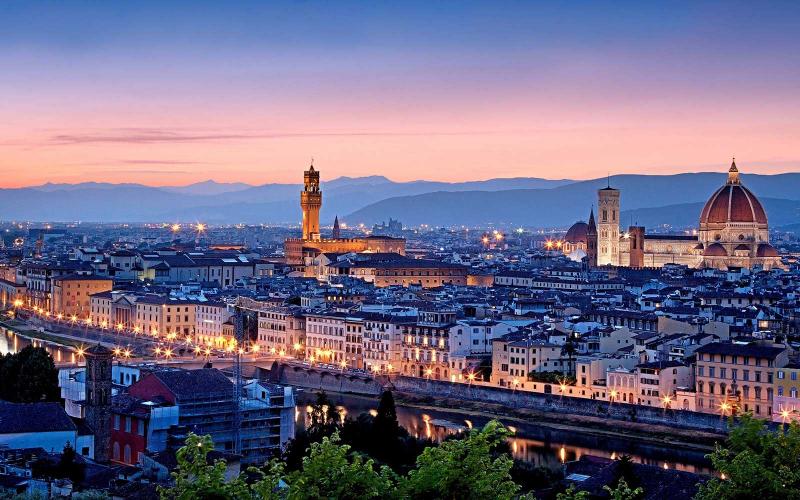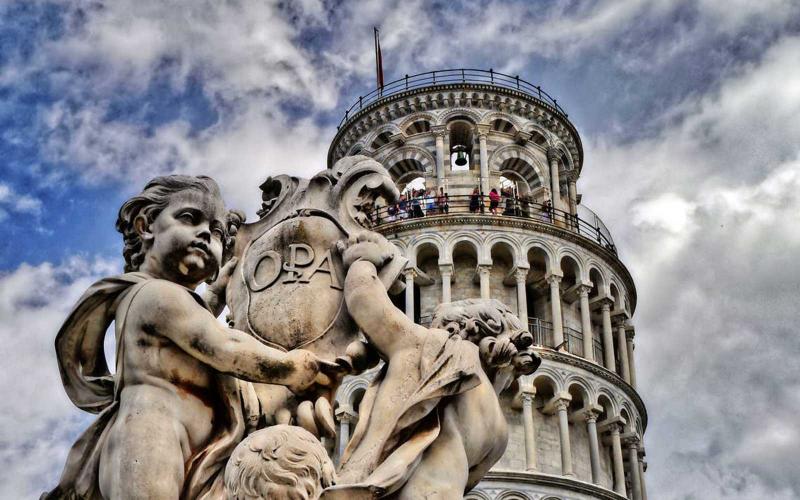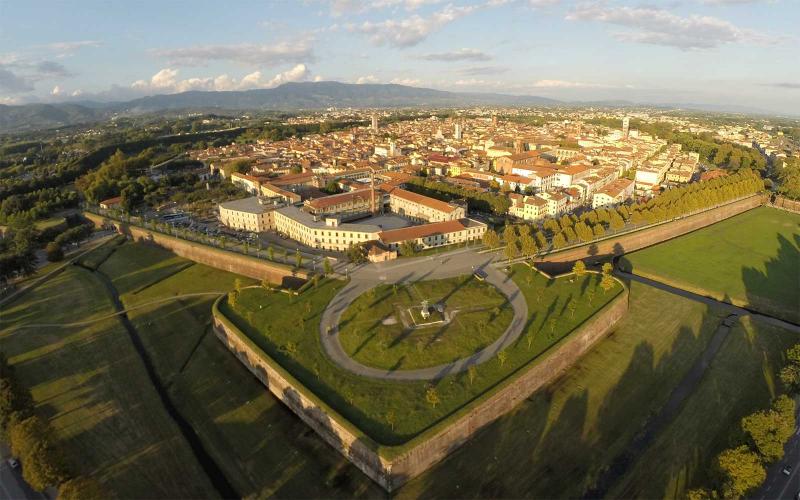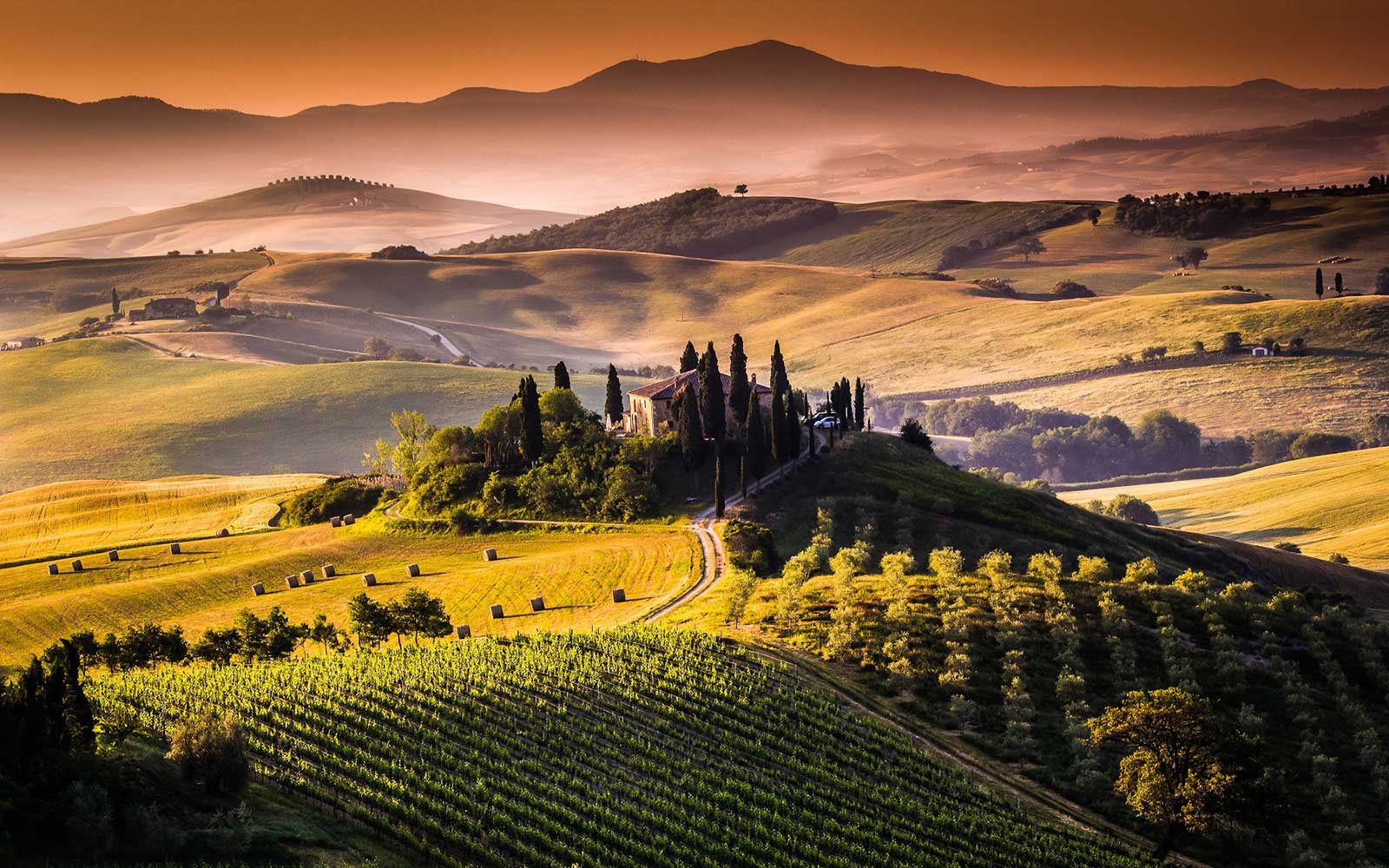Among art cities and wilderness
Montecatini Terme, situated in the heart of Tuscany, make it possible to reach the most important landmarks of the region: from the art cities like Florence, Siena, San Gimignano, Pisa and Lucca, to the mundane localities on the Versilian Coast like Viareggio and Forte dei Marmi, to the naturalistic areas like Padule di Fucecchio, Alpi Apuane and Pistoiese Mountains.
Florence
The cradle of Reinassance can be easily reached from Montecatini in less than a hour, by car or by train.
Florence is the capital of Tuscany and boasts many masterpieces of reinassance art and architecture: one of the most famed places is the cathedral of Santa Maria del Fiore, with the dome designed by Brunelleschi, the Baptistery and the Giotto's Belltower. In the Academy Gallery is exposed the David of Michelangelo, while in the Uffizi Gallery are exposed paintings and sculptures of worldwide fame.
After crossing Ponte Vecchio it is possible to admire Palazzo Pitti and the Boboli Garden, while from Piazzale Michelangelo you can enjoy a beautiful panorama on the entire city.

Pisa
Birthplace of Galileo Galilei, Pisa is renowned for its iconic Leaning Tower. Already tilting when it was completed in 1372, the 56m white-marble cylinder is the bell tower of the Romanesque, striped-marble cathedral that rises next to it in the Piazza dei Miracoli. Also in the piazza is the Baptistry, whose renowned acoustics are demonstrated by amateur singers daily, and the Camposanto Monumentale cemetery.
The embankments of the Arno River, which runs through the city, are lined with elegant aristocratic palaces and medieval churches, such as tiny Santa Maria della Spina. Stylish, pedestrianized Corso Italia is the main shopping street. Many restaurants specialize in hearty Tuscan cuisine, while the nightlife scene is popular with students of the prestigious University of Pisa.

Lucca
Lucca is known for the well-preserved Renaissance walls encircling its historic city center and its cobblestone streets. Broad, tree-lined pathways along the tops of these massive 16th- and 17th-century ramparts are popular for strolling and cycling.
The oval Piazza dell’Anfiteatro is built on the site of a former Roman amphitheater. Lucca’s Duomo di San Martino is an ornate cathedral with a Pisan-Romanesque exterior and a soaring bell tower. The church of San Frediano has a golden 13th-century mosaic on its facade. Palazzo Pfanner is known for its elaborate baroque gardens. Lucca’s few remaining towers (once there were more than 100) include the 14th-century Torre Guinigi, topped with oak trees, and clock-faced Torre delle Ore, with panoramic city views.
Lucca is also known for the Lucca Summer Festival, where many international music stars perform concerts and for Lucca Comics and Games that gathers thousands of cosplayers and comic fans every year.





